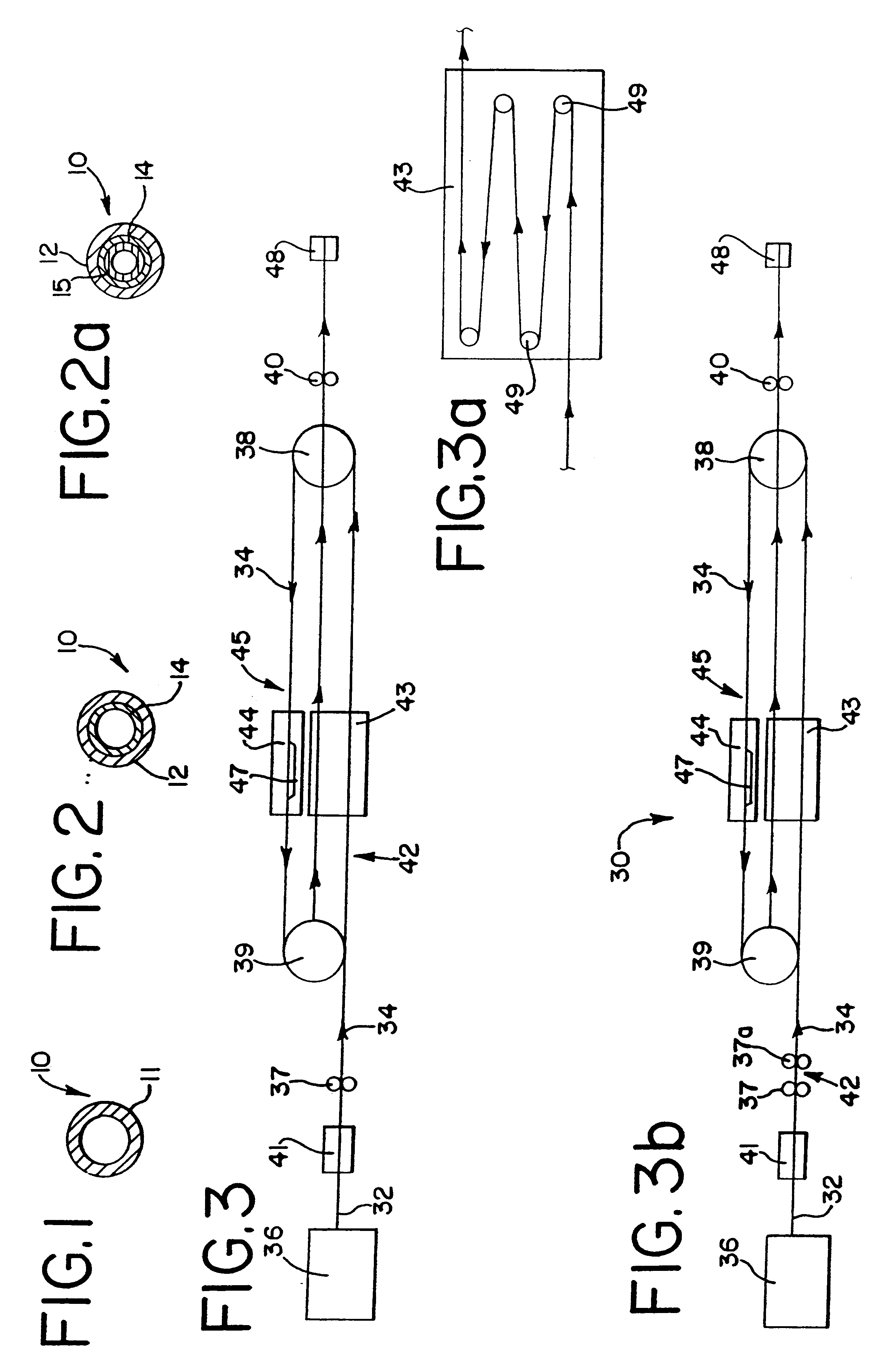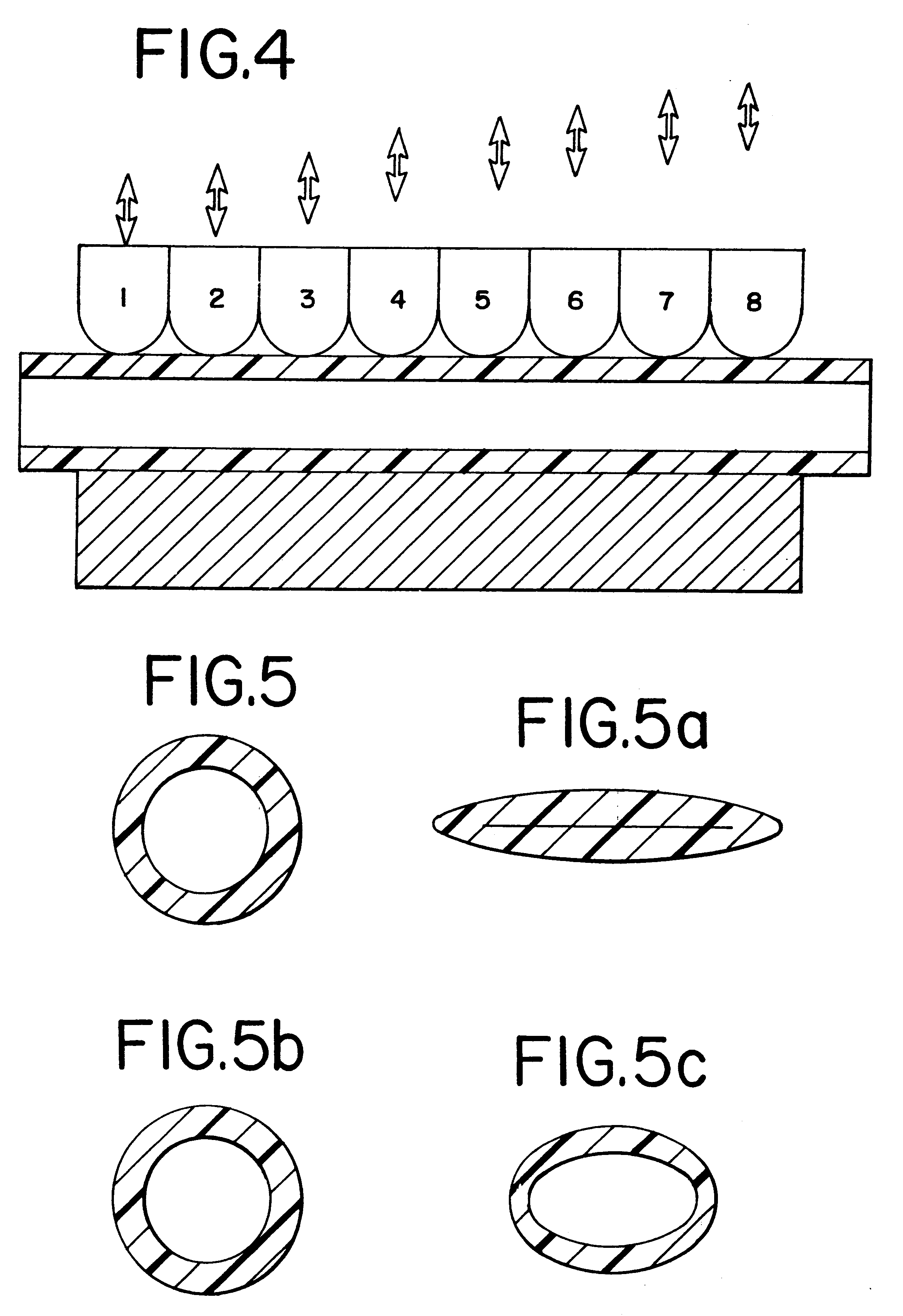Medical tubing and pump performance enhancement by ionizing radiation during sterilization
a technology of ionizing radiation and tubing, which is applied in the direction of intravenous devices, other medical devices, synthetic resin layered products, etc., can solve the problems of ineffective solution, inability to achieve the effect of enhancing tubing performance, and reducing so as to improve the elasticity and resiliency of tubing. , the effect of enhancing the tubing performan
- Summary
- Abstract
- Description
- Claims
- Application Information
AI Technical Summary
Benefits of technology
Problems solved by technology
Method used
Image
Examples
example 1
1. Example 1
Separate tubings fabricated from 100% ethylene vinyl acetate (EVA) (DuPont ELVAX) and a blend of EVA and Ethomeen 0 / 15 (0.23 by weight) (Akzo Nobel Chemical Company) were irradiated at various levels of radiation. The mode of radiation provided was cobalt-60 gamma. Each length of tubing was then used in conjunction with a Flo-Gard.RTM. 6201 medical infusion pump sold by Baxter Healthcare Corporation as described in detail above. The change in flow rate of the pump through the tubing was measured after 72 hours of continuous usage.
The Flo-Gard.RTM. 6201 is a single pump head, electromechanical, positive pressure, peristaltic, intravenous, infusion device. The pump is designed to operate with standard PVC intravenous tubing that conforms to Baxter specifications. The pump has a primary flow rate range from 1 to 1999 mL / hr. Infusible volume for both secondary and primary modes is 1 to 9999 mL. This pump is with a capability of operating with a wide variety of standard admin...
example 2
2. Example 2
Separate monolayer tubings manufactured from a blend of 95% EVA and 5% ULDPE and were treated with different amounts of a precompounded additive, dicumyl peroxide (DiCup). The tubings were then irradiated with escalating doses of cobalt-60 gamma radiation. Finally, the tubings were placed in a FLO-GARD.RTM. 6201 infusion pump, and the percent change in flow rate delivered through the tubings was measured.
The level of additive, the radiation dosage, and corresponding change in pump performance is set forth below in Table 2.
example 3
3. Example 3
In Example 3, tubing manufactured primarily of EVA was irradiated with different doses of radiation provided by electron beam. Table 3 set forth below shows the change in pump accuracy at different levels of electron beam radiation dosage.
PUM
| Property | Measurement | Unit |
|---|---|---|
| Young's modulus | aaaaa | aaaaa |
| density | aaaaa | aaaaa |
| temperature | aaaaa | aaaaa |
Abstract
Description
Claims
Application Information
 Login to View More
Login to View More - R&D
- Intellectual Property
- Life Sciences
- Materials
- Tech Scout
- Unparalleled Data Quality
- Higher Quality Content
- 60% Fewer Hallucinations
Browse by: Latest US Patents, China's latest patents, Technical Efficacy Thesaurus, Application Domain, Technology Topic, Popular Technical Reports.
© 2025 PatSnap. All rights reserved.Legal|Privacy policy|Modern Slavery Act Transparency Statement|Sitemap|About US| Contact US: help@patsnap.com



